May 11, 2021
There's an old book published in 1939 called The Eye Of Revelation.
It's one of those intriguing titles in which, far before the days of peer-reviewed, double-blind human clinical research, adventurers, archeologists, and army personnel would stumble across some fringe practice in an indigenous tribe or far Eastern population, and bring back their time-honored principles to the homeland…
…in this case, the so-called “Fountain of Youth.”
In the book, author Peter Kelder claims that while stationed in India, British army officer Colonel Bradford heard a story about a group of lamas (not the furry spitting animal, but rather a teacher of the Dharma in Tibetan Buddhism) who had apparently discovered a “Fountain of Youth.” The “wandering natives,” as he called them, told him of old men who inexplicably became healthy, strong, and full of “vigor and virility” after living in a particular lamasery (where, naturally, lamas live). After retiring, Colonel Bradford went on to discover the lamasery and even lived with the lamas for a period of time. During that time, they taught Colonel Bradford five special exercises reported to be more than 2,500 years old, which they called their “rites.” According to the book, the lamas described seven spinning, “psychic vortexes within the body: two in the brain, one at the base of the throat, one on the right side of the body near the liver, one in the reproductive organs, and one in each knee. They claimed that as we grow older, the spin rate of these vortexes diminishes, resulting in “ill-health.”
However…drumroll, please…
…the spin rate of these “vortexes” can apparently be restored by performing the special Five Tibetan Longevity Rites (also sometimes referred to as “The Five Rites,” “The Five Tibetans,” and “The Five Rites of Rejuvenation”) daily, resulting in improved health.
Now, I'd briefly come across principles like this, particularly when I interviewed Dr. Stephen Cabral and Dr. Barry Morgeulan, both of whom describe very similar rites they discovered in their own Eastern medicine studies. But I never really systematized them, put them into practice, or wove them into my daily routine.
Until now. In the energy routine and video below, I'm going to show you how I've woven these movements into my own morning “stretch” routine, although with a handful of other exercises borrowed from practices such as Tai Chi and Qi Gong, and also found within the pages of the excellent book The Reality Revolution, by author Brian Scott, who I just had on my podcast to discuss the host of other subconscious reprogramming, energetic, and energy flow practices he describes within the book. I've also written out the entire energy flow routine for you to download here, so you can reference it over and over as you incorporate the movements into your morning.
The Best Morning Energy Routine: Ben Greenfield's Morning Exercises For Unlocking The “Fountain Of Youth.”
The video above will, of course, be quite helpful for you to take notes and adopt this routine for your own morning, but there are a few other helpful notes below that I think may accelerate your learning process and/or enhance this routine for you. At the end of the notes, on the final pages of this document, I have the entire routine written out, along with a few “extra” exercises I sometimes throw in. You can also download the entire energy flow written routine in a free downloadable pdf version you can follow during your workout here.
-Tibetan Rites:
First, for the Whirling Dervish (spinning with arms outstretched), some versions of the Tibetan Rites encourage one to only spin in a clockwise direction, from left to right. I tried that, but actually felt more energy by spinning in both directions. Up to you. If you sprout a strange third, green glowing eye coming out the top of your head by spinning in both directions, perhaps you should follow the exact rules.
Next, there are also a series of mantras often used while performing the Rites—mantras you would either quietly repeat or even think as you perform each. They are as follows…
Five Tibetan Longevity Exercises Mantras:
-Spin = Energy (I am full of energy)
-Leg-Raise = Air (My mind is clear and calm)
-Kneeling Backbend = Water (I am flexible and receptive)
-Tabletop = Earth (I am strong and balanced)
-Upward/Downward Dog = Fire (I am positive and motivated)
Next, there's technically a sixth rite. This one is called uddiyana bandha, and it's a popular yoga breathwork exercise you can get step-by-step instructions for here. A lock, or bandha, in yoga, is a movement in which a segment of the body is sealed, isolated, or constricted in some manner. One of the most powerful of these locks is this uddiyana bandha, which is also referred to as an upward flying lock or abdominal lift, in which you suck your abdominal wall in and up at the end of an exhalation, while restraining the breath. The abdominal organs are all swept up to a higher than normal position in the trunk by a partial vacuum in the chest cavity, then one is encouraged to bend over and hold this vacuum. I actually don't incorporate this one as part of the morning energy routine, but rather, before or even while I go to the bathroom as I've found it to be quite efficacious for stimulating a bowel movement.
Finally, the website T5T.com has wonderful educational resources for learning everything you'd ever want to know about these Rites.
–Door Of Life (AKA Ming Men Side-To-Side Twisting):
This one comes from Qigong, and in his book The Reality Revolution, author Brian Scott describes it as follows:
“In this, you will start by standing with your feet shoulder-width apart, then begin a slow turning motion from the hips and waist. Keep your shoulders, arms, and upper back relaxed—let the momentum from the center of your body move your arms, kind of flopping around. As you continue, let the momentum continue to pick up your arms until they knock gently across your lower back. This stimulates the pressure point on the spine directly behind the navel, called the Door of Life, or the Ming Men. This pressure point enhances your overall vitality and energizes the central nervous system. It’s a simple exercise that you can repeat, turning back and forth twenty-one times, or whatever feels natural. Breathe throughout this entire exercise.”
-Opposite Arm-Leg Crawl Position Extensions and/or Standing Knee-To-Opposite-Elbow Lifts
This is an “extra” that I throw in (like any of these, you can see me demonstrate it in the video). You can do 10-21 repetitions of one (e.g. crawling or standing) or either, but the idea is that by moving left side and right side simultaneously you “wake up” your left and right hemispheric activity in the brain, resulting in better coordination and creativity.
–Loose Fists On Lower Back Massage:
In his book, Brian Scott instructs:
“Do a qi massage on your lower back. To do this, put your hands on your lower back and massage it with loose fists tapping your lower back. Start as high as you comfortably can, and go as low as you comfortably can. This wakes your adrenal glands and stimulates the Door of Life pressure point. It also energizes the kidneys and brings circulation to the lower back.”
-Tap Up-And-Down Legs & Chest Thumps:
For this, Brian Scott says:
“Now, move down to the outside of your legs and slap them with the palms of your hands, all the way down to your feet, then back up the inside of your legs. Come up to the hips, still gently slapping your legs, up to a Tarzan-esque pounding on your chest. This stimulates your lungs, heart, and thymus gland. It’s rejuvenating, to the extent that it is said to slow down aging. Do this entire circuit three times, and at the end of it shake your body out. You might have seen athletes do this before a basketball game. The players are nervous and have a lot of excess energy, and they shake their body out. You’re going to do the same thing, but to shake the negative energy out.”
-Tiger Bend & Lift:
This one is very straightforward. Imagine you’re grabbing energy from the earth, pulling it up towards your heart, then raise your hands into the air, stretching upwards as you pull the energy in an upwards direction and then pulling it back down.
-Zen Swings Side-To-Side:
Begin in a standing position with your knees slightly bent. Keep your body loose and relaxed as you gently sway your hips, torso, and arms back and forth. (If you’re a golfer, this is kind of like your swing.) As your body goes back, most of your weight should rest on the back leg. Then, without stopping at the top, sway forward until most of your weight is on your front leg. Repeat this movement for as long as you’d like, letting your arms swing naturally, and shifting your angle to access different parts of your spine.
Here's a link to a helpful free .pdf that gives you even more nitty-gritty details on this one. The pdf actually describes four points, but I kind of combine points two and three together and move my hands around as I tap and thump. Maybe this is going to make me die early from some horrible meridian-energy-flow-related disease, but I personally find it saves just a touch of time, so it may all be a wash anyway.
This is one of my favorite finishers. The video spells it out pretty well, but it's such an invigorating exercise, I often also weave it (and occasionally some of the other exercises above) into my daily energy routine, particularly during the short movement breaks I often take during the work day. It, like the “sixth” Tibetan Rite, is also pretty darn good at stimulating a morning bowel movement, especially if you don't have something like a mini-trampoline.
Summary
So there you have it: a simple 15-minute morning energy routine that works like gangbusters. Don't blame me if you're reading this at 78 years old and suddenly develop the vigor, libido, and vitality of a sixteen-year-old. Or at least, a noticeable uptick in your energy throughout the day, if it works for you like it works for me.
A couple of last notes before I finish up.
First, this website is a fantastic resource for learning even more about the Tibetan Rites, and also for downloading e-books and wall posters that can help you learn these exercises in even more detail than what I describe below.
Second, I have about half a dozen similar “movement snacks” and morning/office break/airplane/travel stretch routines detailed in the Beauty & Symmetry chapter of my book Boundless. If you're the type of person who digs having a few routines in your back pocket to use during the day for increased energy, that'd be a good resource for you, as well.
Third, check out my podcast “Why The Way You Think About Time Might Be Wrong, Hacking Your Subconscious, The Perfect Morning Energy Routine & More: Reality Revolution With Brian Scott.” for an in-depth discussion with Brian Scott about energy flow, the 5 Tibetan Rites, intention setting, and much more.
Finally, for your convenience, you can also download this handy guide that details my morning energy flow practice. Also, below I've laid out a full routine that incorporates all the exercises I show in the video, and a few other favorites.
- Gratitude Heart Coherence Exercise: Think of something you’re grateful for, and spend 1-2 minutes breathing it into your heart’s center (more details on this coherence exercise here)
- Five Tibetan Rites: 10-21 repetitions of each
Spin = Energy (I am full of energy)—to left only
Leg-Raise = Air (My mind is clear and calm)
Kneeling Backbend = Water (I am flexible and receptive)
Tabletop = Earth (I am strong and balanced)
Upward/Downward Dog = Fire (I am positive and motivated)
- Door Of Life: 10-21 repetitions per side of side-to-side twisting/slapping/breathing
- Knee-To-Elbow Touches: 10-21 repetitions per side in both crawling/standing positions (for L/R brain hemisphere activation)
- Loose Fists Massaging On Back: 30 seconds
- Tap Up & Down Legs: 30 seconds
- Tarzan Chest Thumps: 30 seconds
- Tiger Bend & Lift Towards Sky: 10-21 repetitions
- Zen Swings Side-To-Side: 10-21 repetitions per side
- Three Thumps: 10-21 thumps each on cheeks (stomach), cross hands/collarbone (thymus/kidneys), and top of ribs (spleen)
- Tai Chi Shaking: 30-60 seconds with deep breathing
- Kundalini Energy “Swoops”: 60-120 seconds with deep breathing (this step all the way through step 17 demonstrated in the free Boundless morning workout routine here)
- Yoga Sun Salutation Series: 1-3 repetitions
- Kundalini Energy Punches: 60-120 seconds
- Yoga Sun Salutation Series: 1-3 repetitions
- Super Slow Sets: One set each of 10 repetitions of super slow squats, super slow lunges, and super slow push-ups with 1-3 sun salutations for recovery between each (shoot for 10-30 seconds down and 10-30 seconds up for each exercise)
- If time, 2-minute finisher of sit down/stand up exercise
- Wim Hof Breaths: 40, laying down on back, with the intention for your day setting while holding final exhale
- 1-2 minutes post-breath silent relaxation (still laying on back) of 4 count in/8 count out
Do you have a morning energy routine? Are you interested in trying this sort of movement practice? Leave your comments, questions, and feedback below. I'd love to hear from you. You can also download the entire energy flow written routine in a free downloadable pdf version you can follow during your workout here.

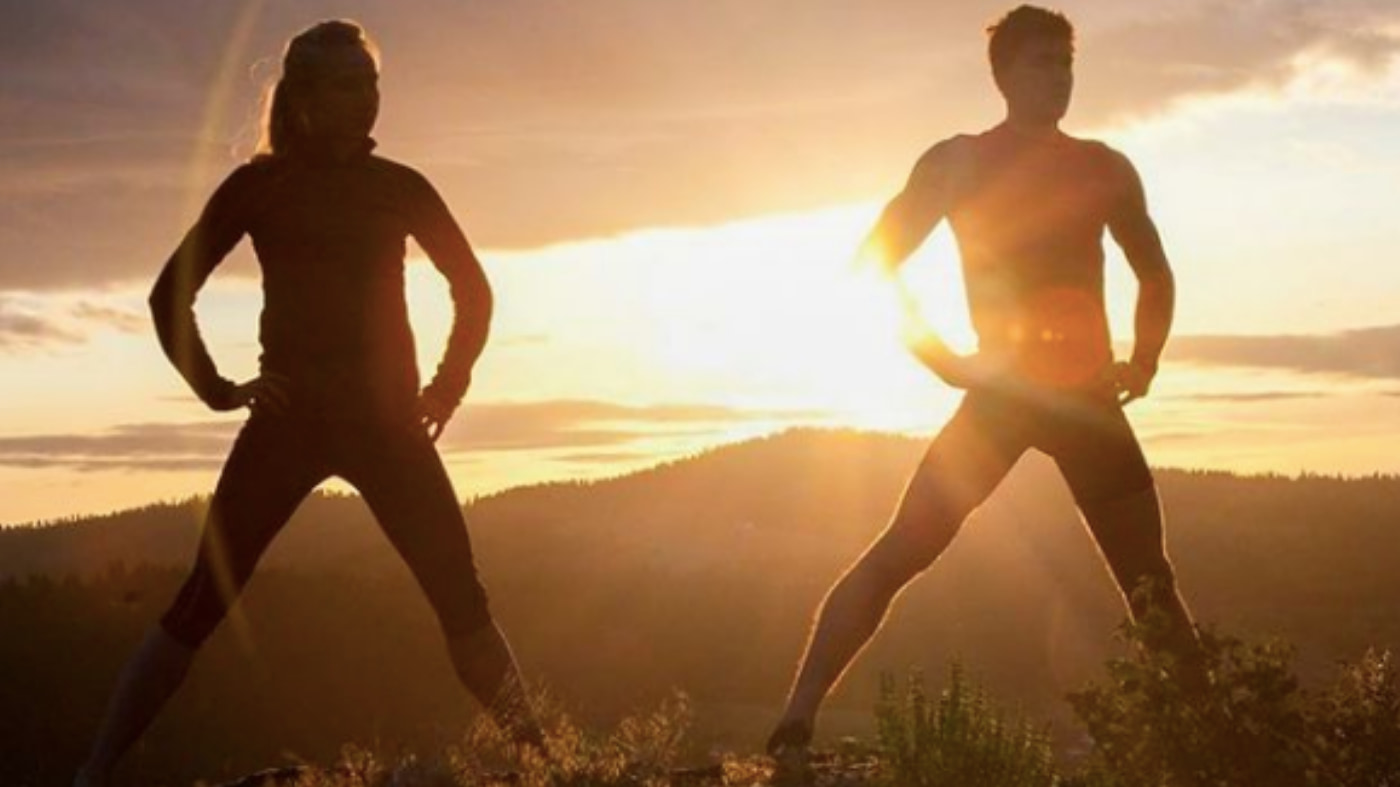
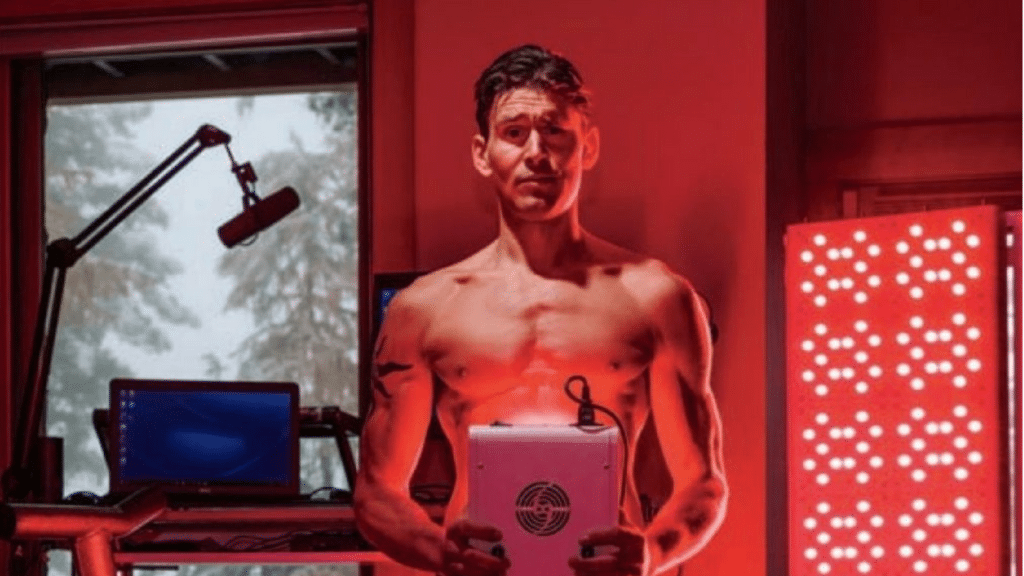
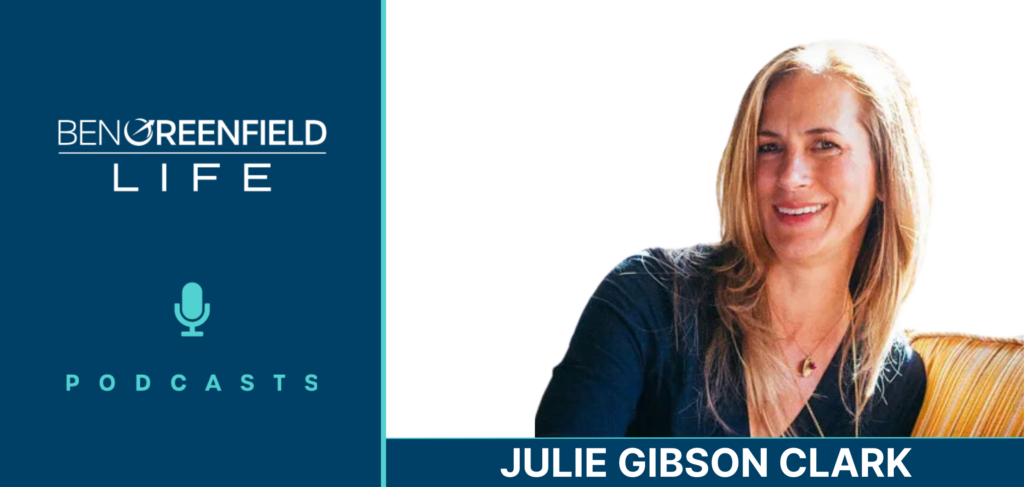



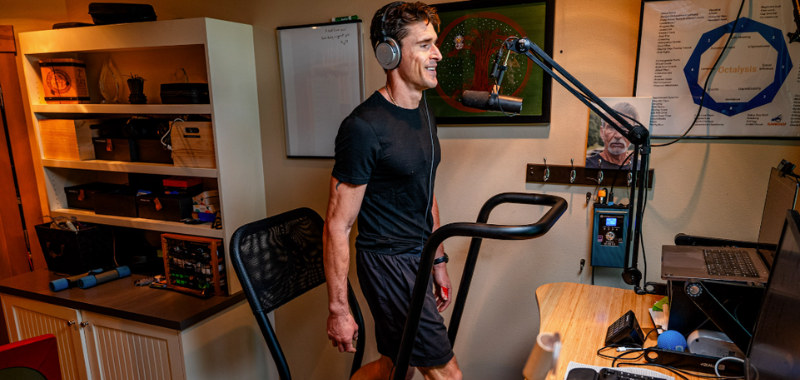


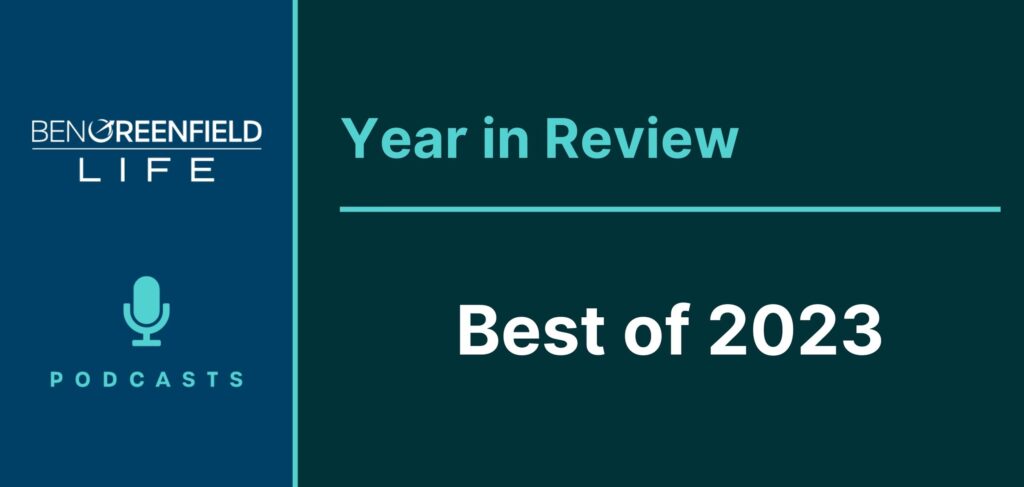

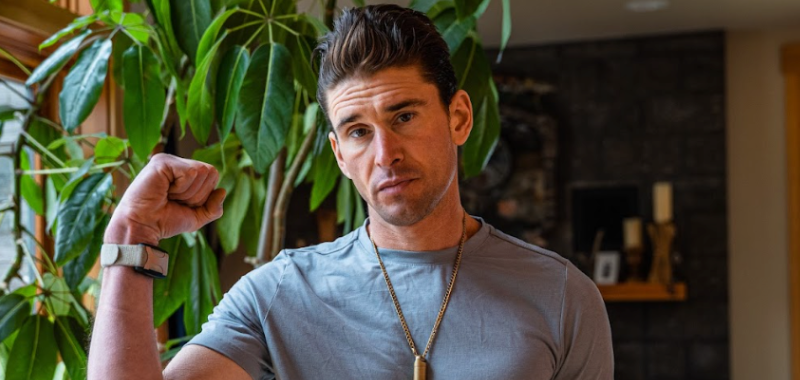

Ben,
Where do I find the PDF?
I like to wake up early, even very early, but I don’t like to workout in the morning. When I’m teaching Zumba classes for kids, I’m starting at about 9 or 10 am. For the heavy workouts or Zumba Fitness classes I choose the afternoon hours. I have tried some workouts in the morning, but it wasn’t for me. I will thry Your program. Thank You for good work.
Ben—how would you incorporate foam rolling here—at the beginning, end, or some other time of the day?
Check out my Morning Foam Rolling/Mobility Routine
I’ve done the 5 rites before and found them to be powerful – but I couldn’t keep them up because my neck and shoulders became very stiff. Any thoughts…
So I followed along on the video this morning, didn’t quite get the full effect of make it to 21 reps for all of the exercises and I’ve been feeling extra energized all day. Not sure if it’s the placebo effect, but I’ll certainty be experimenting with this. My morning for the past 4ish months has consisted of stretching, meditation, and journaling for 25-40 min immediately after waking and hydrating, so I’ve had a solid baseline.
Thanks for sharing, Ben!
yay!
Many people leaving comments here it seems, mention tucking the chin during several exercises. I would be interested to know if you have researched the validity of the folks insights and if you are planning to provide an updated instructional to what you have already provided.
Than You for all your diligent work on sharing all the great work and people in your excellant podcasts !
Hey Ben, as always I appreciate your valuable insight to everything. I’ve been following you for years and sharing with everyone I know as much as I can. In regards to the above routine, how do you feel about doing these exercises on a Power Plate®? Do you think it would enhance the experience or the value?
Great exercises. I wonder why you chose wim hof and a more harmonious pranayama?
Dear Ben,
Great video and article , but with all due respect, 5 tibetans are done wrongly (or not as described in Peter’s book), I know you are knowledgeable, but reason why those exercises work are because of pressure points you are pressing with your chin in all 4 exercises (except first one), especially because you are pressing tithmus gland (which start to atrophy around age 12),and because you stretching special point behind your neck – jade pillow), everything else is great, of course there are more esoteric exercises, aka swallwing your saliva (because of enzymes etc), after you nock your teeth and do tongu swirling), drumming your jade pillow point, pressing few other points etcetc..
But this is great video, tnx for sharing your knowledge
Robert
Thanks Robert! do you have any links or demonstrations of these modifications?
Dear Ben,
Hmm, in the book the eye of Revelation by Peter Kelder, edited by J. W. Watt.. There are for those rites stated (in original Kedler writings).. ‘with head forward – – chin on chest), for rite3, 4 and 5.
Also how I remember, in original txt, for majority of rites there was no drawings of rites (later editions add this, but not original), also if you read book Kum Nye by tarthang tulku, you can find some of those rites in this (tibetan yoga book),l. As u perfectly wrote in you article, name of the game are those vortexes (7, but usually in old txt there are 12 of them.. Main ones), so to activate them, by mantras, breathing and those postures, you activate those vortexes, aka glands, aka hormones and create internal alchemy, because with those bandings and pressings you manipulate those points, (pressing chin on chest, tythmus gland is very important), also in rite number 4(table),you tighten your whole body when you are in table position and in rite number 5 when you are in up position, this is important too,.. There are on YouTube few people who is doing (let’s say correctly those rites), but when you do research of tibetan yoga in general, you can find those rites how was ‘originally’, done as part of Kum Nye, Trulkhore etc..)
Hope this helps.
Robert
P. S: On my travels, when I was searching for oldest people, I found especially in some parts of Russia, they do similar exercises, and all incorporate those chin pressings, also interesting was, they did not fuss about breathing, and I think originally Kedler never wrote how you breathe when you do those rites and one hint… Staple of all those long living Russians was drinking of one day old oat water, /you put whole oats, in jar, fill with water, and after one day consume that water..it is effective in my opinion Because it is highly negative charged and full of enzymes.. Try it
Best regards from Croatia
Also this guy is amazing :https://joshmitteldorf.scienceblog.com/
And double check this
https://insilico.com/
P. S:my apologies for incorrect grammar
thanks!
You beat me to it. The 2nd Rite is completely wrong as well. Come on Ben! Your still the man!
Fantastic morning routing Ben, cheers!
Thankyou so much for this…brilliant. I’ve tried a little Qi gong utube vid now n then..and it always makes me feel so good and energised…and when I’m doing it, it feels so natural to me…like coming home! However, thru v poor health,(and some laziness), I hardly ever do it. Youve encouraged me tho.
I tried the 5 Tibetan Rites a few years ago, i’ve had thoughts of getting back to them but not sure how it would affect my normal workouts since I have to pace myself as i’m still recovering from lyme. (though i’m massively improved from where I started).
I was doing Qigong an hour a day, Wisdom Healing Qigong is great. I noticed I had alot more energy when I was doing it.. but I stopped as something else I started conflicted with it.
Qigong is one of those things that it doesn’t exactly make logical sense ‘why’ you have alot more energy.. but it definately works well.
Thanks for all you do Ben. Looking forward to trying this m. A video of the complete sequence could be a good Instagram or YouTube addition to your platforms.
Cheers,
Conor